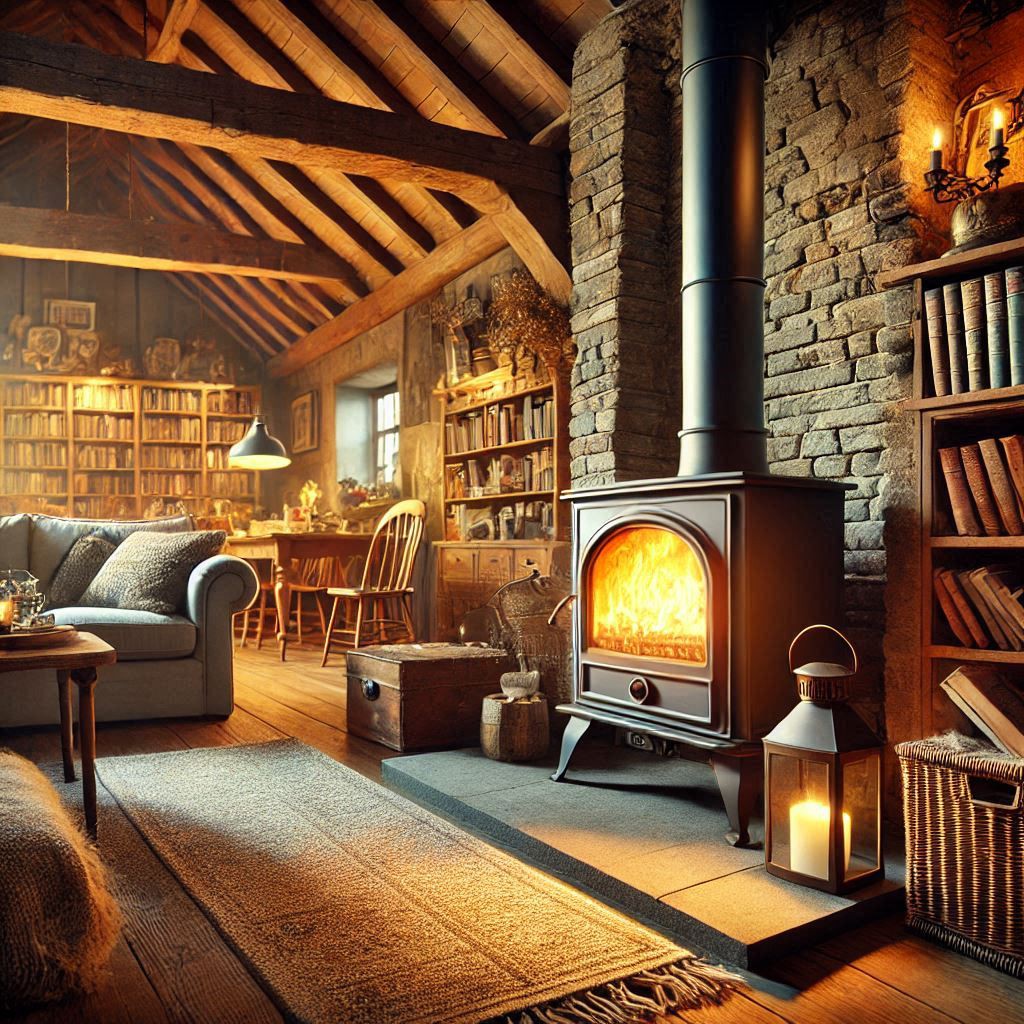Understanding Heat Loss Through Your Chimney When a Woodburner is Unlit
Prevent heat loss through your chimney

When your woodburner isn’t lit, your home can feel like it’s losing warmth at an alarming rate. The chimney, once an asset for cozy heat, transforms into a cold draft’s gateway. Understanding why this happens and finding effective solutions can save energy and keep your home warm.
Why Heat Escapes Up the Chimney
To grasp why you lose heat up the chimney, let’s dive into the mechanics. Your chimney functions as a natural ventilation system, designed to draw smoke and gases up and out when your woodburner is active. This process relies on the principle of convection—hot air rises. However, this same principle can lead to unwanted heat loss when the woodburner is unlit.
Stack Effect:
This phenomenon occurs due to temperature differences between the inside and outside of your home. Warm air inside naturally rises and escapes through any available openings, including your chimney. Cold air then enters through lower openings to replace the lost warm air, creating a continuous cycle.
Negative Pressure:
Unsealed chimneys can create negative pressure zones, drawing warm air out of your living space. This is particularly noticeable in older homes or those with poor insulation.
Chimney Drafts:
Even when unused, chimneys can allow cold drafts to enter, making nearby rooms feel colder and increasing your heating costs.
Solutions to Prevent Heat Loss
Addressing heat loss through an unlit chimney involves both quick fixes and more permanent solutions. Here are some effective methods:
Chimney Balloons:
These inflatable devices can be inserted into the chimney when not in use, blocking drafts and heat escape. They are easy to install and remove when you need to light the woodburner.
Chimney Caps:
Installing a chimney cap can prevent downdrafts and minimize cold air infiltration. It also keeps debris and animals out, improving overall chimney efficiency.
Dampers: Ensure your damper is fully functional. Top-sealing dampers are particularly effective, as they create a better seal at the top of the chimney, reducing heat loss.
Insulated Flue Liners:
Adding an insulated flue liner can help maintain the chimney’s temperature, reducing the stack effect. This is especially useful in older homes with unlined chimneys.
Sealing and Insulation:
Improve overall home insulation, focusing on sealing gaps around windows, doors, and attic spaces. This reduces the negative pressure that draws warm air out through the chimney.
Regular Maintenance:
Schedule regular chimney inspections to ensure it remains in good condition. Cracks or damage can exacerbate heat loss.
The Benefits of Implementing Solutions
By implementing these solutions, you not only prevent heat loss but also enhance your home’s energy efficiency. Reduced drafts and stabilized indoor temperatures mean your heating system works less hard, lowering energy bills. Moreover, improved chimney maintenance can prolong the life of your woodburner and chimney structure.
Conclusion
While a chimney is essential for a functioning woodburner, it can become a conduit for heat loss when the woodburner is unlit. Understanding the dynamics of heat escape and applying targeted solutions can transform your chimney from a heat thief to an efficient home feature. So, take these steps to seal in the warmth and enjoy a cozy, energy-efficient home all winter long
